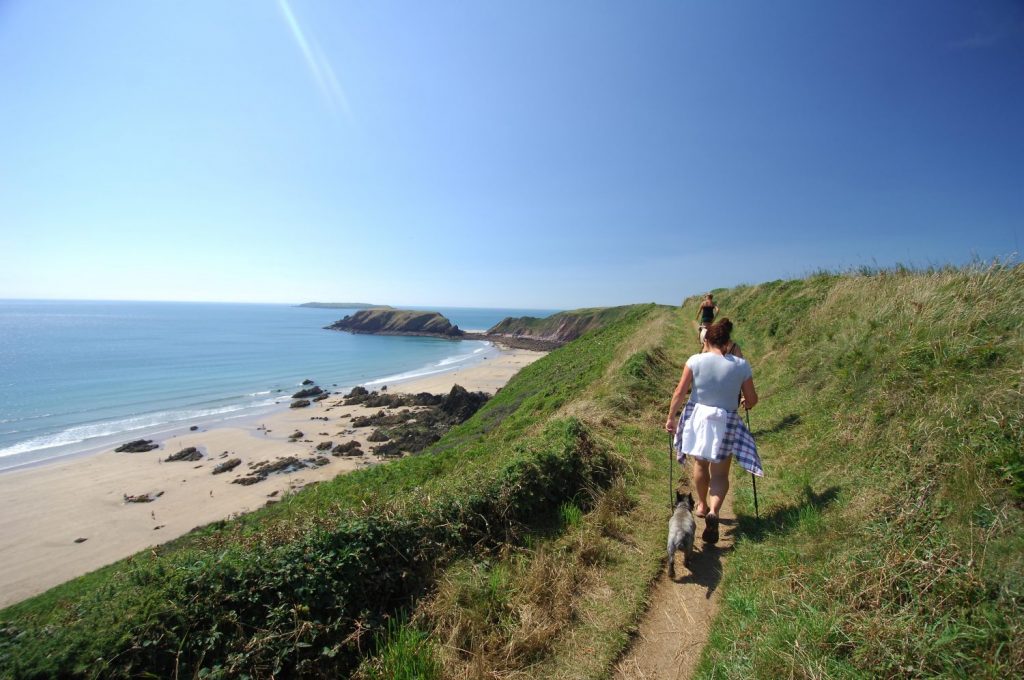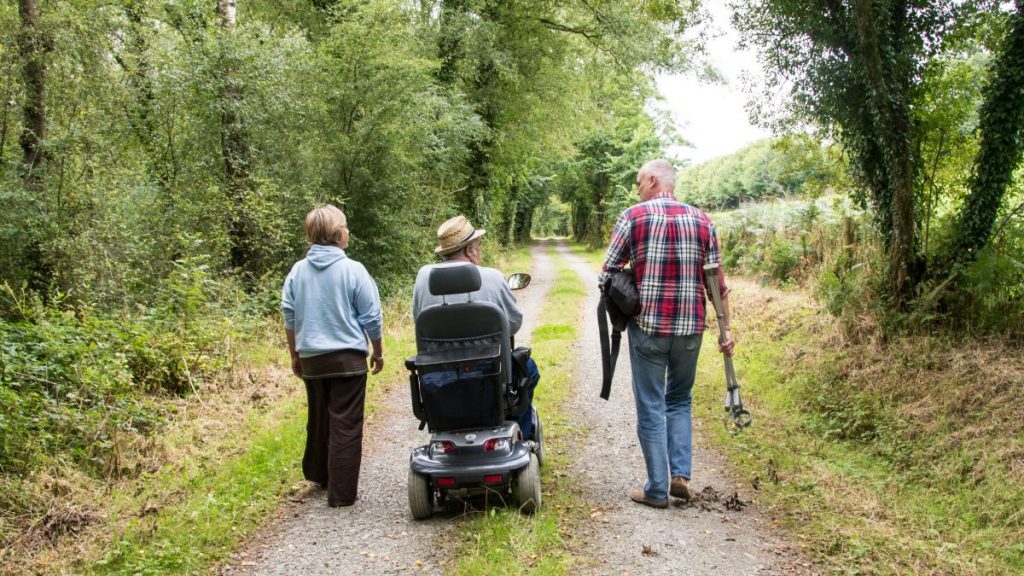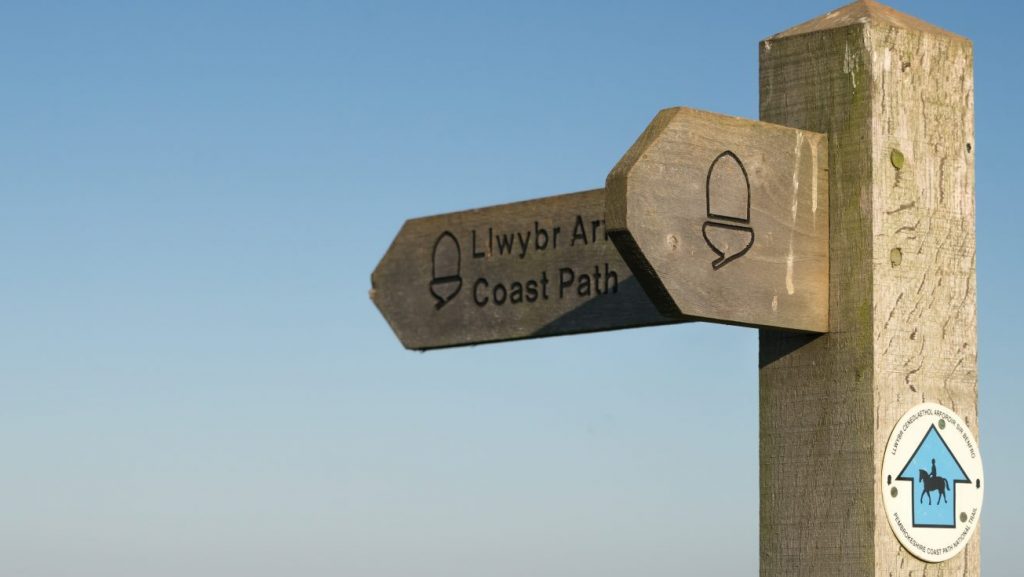DISTANCE/DURATION: 5.1 miles (8.2 km) 2 hours 30 minutes.
PUBLIC TRANSPORT: None.
CHARACTER: Wooded slopes, river valley, easy to moderate but steep near Tregynon, farm tracks and livestock, can be wet and muddy, 0.2 mile (0.25 km) minor road walking.
LOOK OUT FOR: Pontfaen Church (up hill from car park), scenic wooded valley and river waterfalls and Iron Age fort near Tregynon.
The River Gwaun rises in the Preseli hills and flows through the beautiful, steep-sided Gwaun Valley to the sea at Fishguard (the town’s Welsh name Abergwaun means mouth of the Gwaun).
The valley is a relict of the Ice Age, formed by the huge volumes of meltwater that flowed as the glaciers retreated.
Pembrokeshire lay on the edge of a huge ice sheet that filled the Irish Sea and the Gwaun’s v-shaped profile suggests that it was cut by water flowing under the ice itself.
Today, things are far more tranquil. The Gwaun is a meandering stream that passes through marsh, woodland and water meadows. The valley sides are thickly wooded, with densely packed oaks growing on challenging gradients.
In spring the woods are full of wild bluebells and the song of summer bird migrants like wood and willow warblers fills the air. Buzzards and sparrowhawks are a common sight.
Where the route stays close to the Gwaun look out for kingfishers and grey wagtails. You may also see a dipper; small and brown, these little birds dive into fast-flowing water to hunt out food, but are so well waterproofed that droplets simply spin off their plumage as they re-surface.
Pontfaen and Tregynon are both on what was the old turnpike road from Haverfordwest to Newport.
Pontfaen’s little church is dedicated to St Brynach, a 6th century missionary who is said to have communed with angels on Carningli, which overlooks the Gwaun Valley.
The church is mostly Victorian, but two inscribed stones in the churchyard may date back as far as Brynach’s time.
The valley is sometimes described as the secret cwm, and it does certainly have sense of mystery about it.
That strangeness is, perhaps, heightened because the valley communities refused to accept modernisation of the calendar in the 18th century and the Old New Year, Hen Galan, is still celebrated each January 13th.
Find this walk
Grid ref: SN024340
COUNTRY CODE!
- Enjoy the countryside and respect its life and work
- Guard against all risk of fire
- Leave gates and property as you find them
- Keep your dogs under close control
- Keep to public paths across farmland
- Take your litter home



